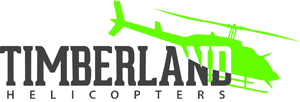Energy
The way energy inspections are performed is rapidly changing. Organizations must remain agile and adopt innovative technologies to optimize workflow and enhance efficiency, and increase accuracy. More and more, energy providers are looking towards unmanned systems such as UAVs, aka drones, to meet high-tempo industry needs for the wind, solar, electrical/utility, nuclear, and oil & gas sectors.

Solar
The average human can only inspect 60 photovoltaic (PV) panels per hour. Small unmanned aerial systems (sUAS) are capable of inspecting 4000 PV panels per hour. In contrast, it would take a human eight days to achieve the same task. The time and cost-savings of up to 46%, along with safety improvements, are staggering in comparison.
Processed thermal and color imagery generated from sUAS is analyzed with Artificial-Intelligence (AI) and machine learning algorithms to detect, classify, and localize anomalies.
Mission profiles can be stored and replicated on a weekly or monthly basis for failure evaluation, analytics, and deterioration studies.
Wind
Vertical inspections require precise and explicit imagery, even when high winds are present. High-turbulence environments can be unpredictable and unforgiving; thus, a stable platform with obstacle avoidance is paramount. Identify fissures, cracks, other structural stresses, or anomalies that require immediate attention.
Wind turbine inspection presents complex challenges due to the vertical heights. Current inspection methods typically involve humans on ropes or access equipment such as “cherry pickers.” Both approaches have demonstrated significant health and safety risks and require extensive downtime and meticulous planning. Such methods result in reductions in the overall efficiency of energy generation.
As an alternative, close proximity powerline inspections via Unmanned aerial vehicles (UAVs) offer significant improvements with advanced sensors, precise, accurate, and replicable flights. Sense and avoid technologies, along with electromagnetic fields (EMF) shielding prevent UAVs from contacting structures from high gusts or pilot error. All while delivering high-resolution imagery, video, and LiDAR, plus developing 3D digital twins for objective evidence and advanced analytics.


Power Lines
Known as the circulatory system of modern power grids; power lines cover vast geographic distances. Due to their height, wires, and electromagnetic fields (EMFs), they present extreme difficulties to thoroughly and adequately inspect. Traditionally, inspections performed by helicopters are costly and may not always be able to view or photograph the entire structure from the various angles needed.
As an alternative, close proximity powerline inspections via UAVs offer significant improvements with advanced sensors, precise, accurate, and replicable flights. Sense and avoid technologies, along with EMF shielding, prevent UAVs from contacting structures from high gusts or pilot error. All while delivering high-resolution imagery, video, and LiDAR, plus developing 3D digital twins for objective evidence and advanced analytics.
Nuclear
Nuclear facilities are managed with stringent operational standards to ensure safety. However, atomic materials also present serious safety risks to inspectors. Unmanned aerial vehicles (UAVs) offer a strong use case as an alternative safe means to carry out more efficient nuclear inspections. High-resolution visual and thermal imagery solutions can detect structural stresses or anomalies and identify potential leaks.
UAVs offer significant improvements with advanced sensors, precise, accurate, and replicable flights. Sense and avoid technologies prevent UAVs from contacting structures from high gusts or pilot error. All while delivering high-resolution imagery, video, and LiDAR, plus developing 3D digital twins for objective evidence and advanced analytics.


Oil & Gas
Paramount to modern energy and maritime facilities are safety and efficiency. These industries currently face challenges like never before. Maintaining operations with minimal disruption is mission-critical. Current inspection methods via humans are timely and present significant risks to health and safety, and subjectivity. Complex structural layouts and facilities can cover large hazardous areas.
Unmanned aerial vehicles (UAVs) provide quick and efficient inspections from the air for high altitude facility surveying and close-proximity internal or external vertical inspections. UAVs offer significant improvements with advanced sensors, precise, accurate, and replicable flights. Sense and avoid technologies prevent UAVs from contacting structures from high gusts or pilot error. All while delivering high-resolution imagery, video, thermal, and LiDAR, plus developing 3D digital twins for objective evidence and advanced analytics.

